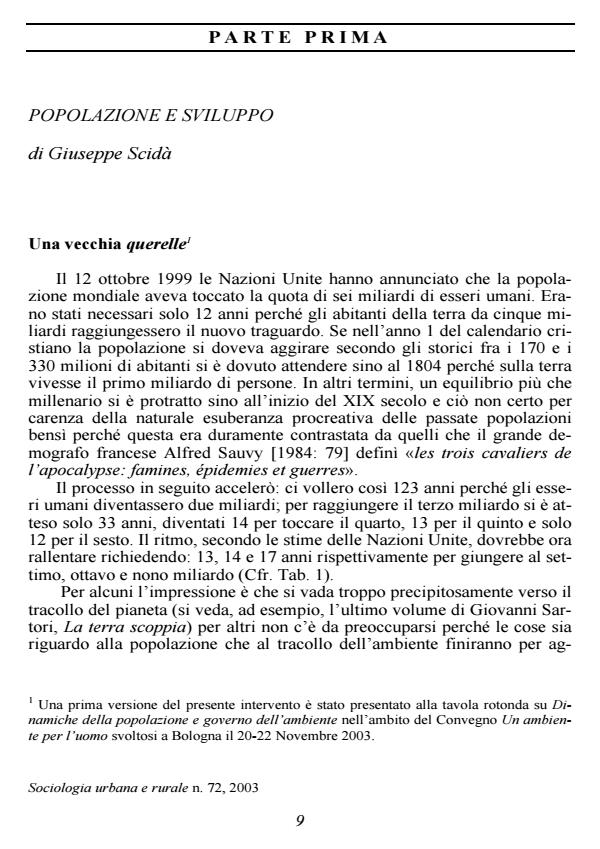Popolazione e sviluppo
Titolo Rivista SOCIOLOGIA URBANA E RURALE
Autori/Curatori Giuseppe Scidà
Anno di pubblicazione 2004 Fascicolo 2003/72
Lingua Italiano Numero pagine 16 P. Dimensione file 160 KB
DOI
Il DOI è il codice a barre della proprietà intellettuale: per saperne di più
clicca qui
Qui sotto puoi vedere in anteprima la prima pagina di questo articolo.
Se questo articolo ti interessa, lo puoi acquistare (e scaricare in formato pdf) seguendo le facili indicazioni per acquistare il download credit. Acquista Download Credits per scaricare questo Articolo in formato PDF

FrancoAngeli è membro della Publishers International Linking Association, Inc (PILA)associazione indipendente e non profit per facilitare (attraverso i servizi tecnologici implementati da CrossRef.org) l’accesso degli studiosi ai contenuti digitali nelle pubblicazioni professionali e scientifiche
Is the demographic growth a mere consequence of the changing come from the first steps of the economic growth or is the population growth which makes development possible? Experts realize that the relation between development and population hasn’t yet become emancipated from the well-known querelle risen in the XVIIIth century in the days of Malthus and Condorcet and gone on in the debate after the industrial revolution in England. Some more, in a far-off 1974, the United Nations, on the occasion of the First World Conference on Population, didn’t go any farther a tactful and neutral comment: Demographic variables have an influence on development factors and vice versa. In more recent years, the same question has come up again. From one side, in the years 60s-80s, the strong economic growth in four small Asian countries (South Korea, Taiwan, Singapore, Hong Kong) knew a decrease of the demographic growth. On the other side, in the same period, both variables rose simultaneously in countries as Mexico or Ivory Coast. Anyway, it is a fact that a 60% of over 6 billion people in the world is now concentrated in Asia, particularly in China and India. From the analysis of the demographic policies of these countries with a strong economic growth, some new certainties rise as regards the ways of best discouraging the demographic growth. The most relevant ones are some policies promoting the human capital, particularly the feminine one, generally neglected in the past.
Giuseppe Scidà, Popolazione e sviluppo in "SOCIOLOGIA URBANA E RURALE" 72/2003, pp , DOI: